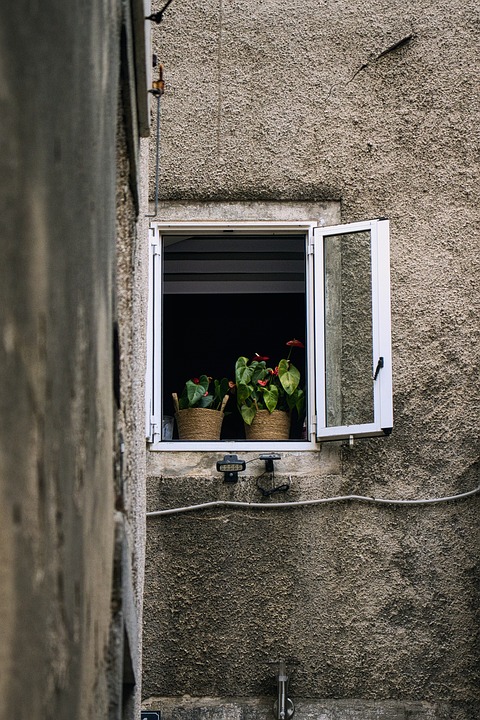Introduction
Indoor air pollution is a common concern in today’s modern world. People spend a significant amount of time indoors, whether at home or in offices, and this prolonged exposure to indoor pollutants can have detrimental effects on our health. However, there is a simple and natural solution to enhance indoor air quality – house plants. Not only do house plants add beauty and freshness to our living spaces, but they also act as natural air purifiers, removing harmful toxins and improving the overall quality of the air we breathe.
The Benefits of House Plants for Air Quality
House plants have several mechanisms that contribute to the improvement of indoor air quality:
1. Removal of airborne toxins: Many common house plants have the ability to absorb and eliminate harmful chemicals such as formaldehyde, benzene, and trichloroethylene that are commonly found in indoor environments due to cleaning products, furniture, and other sources.
2. Increased humidity: House plants release moisture through a process called transpiration. This additional moisture can help combat dryness in indoor air, reducing the risk of respiratory issues like dry throat, cough, and irritation.
3. Oxygenation: Through photosynthesis, plants use carbon dioxide and release oxygen. Having more plants indoors means a higher oxygen content, resulting in fresher and healthier air for us to breathe.
4. Psychological benefits: The presence of house plants has been known to improve mood, reduce stress, and enhance overall well-being. This psychological benefit can indirectly promote a healthier indoor environment by alleviating emotional stressors.
Best House Plants for Improving Indoor Air Quality
While most plants contribute to cleaner air, some varieties are particularly effective at removing toxins. Here are a few house plants known for their air-purifying properties:
1. Snake Plant (Sansevieria trifasciata): This plant is easy to care for and removes toxins like formaldehyde and benzene from the air.
2. Spider Plant (Chlorophytum comosum): Spider plants are highly efficient in removing carbon monoxide and formaldehyde.
3. Aloe Vera (Aloe vera): Apart from its medicinal properties, aloe vera is also effective at removing formaldehyde.
4. Peace Lily (Spathiphyllum): Peace lilies are excellent at filtering harmful compounds like ammonia, benzene, and trichloroethylene.
5. Boston Fern (Nephrolepis exaltata): Boston ferns have strong air-purifying abilities and are particularly good at removing formaldehyde.
Tips for Maximizing Air Purification
To make the most out of your house plants for air purification, consider the following tips:
1. Choose the right plants: Select house plants known for their ability to remove specific toxins from the air.
2. Increase plant density: Add multiple house plants throughout your indoor spaces to maximize their air-purifying benefits.
3. Place plants strategically: Position house plants near potential sources of indoor pollutants, such as in the kitchen or near furniture, to efficiently absorb toxins.
4. Regularly clean and maintain plants: Dust can accumulate on the leaves of house plants, hindering their air purification capabilities. Wipe the leaves occasionally to remove dust and maintain their effectiveness.
5. Provide proper lighting and watering: Ensure that your house plants receive adequate sunlight and water, as a healthy plant will be more efficient in air purification.
FAQs
Q1: Can house plants really improve indoor air quality?
A1: Yes, house plants have been scientifically proven to remove airborne toxins and improve indoor air quality. They provide a natural solution to combat indoor air pollution.
Q2: How many house plants do I need to make a difference?
A2: The number of house plants you need depends on the size of the space you want to purify. As a general rule, aim for 1 medium-sized house plant per 100 square feet of indoor space.
Q3: Do house plants require a lot of maintenance?
A3: House plants come in various levels of maintenance. Some plants, like snake plants and pothos, require minimal care and are perfect for beginners. Others may need more attention, such as regular watering and occasional pruning.
Q4: Are all house plants safe for pets?
A4: While many house plants are safe for pets, some can be toxic if ingested. It is important to research and choose pet-friendly plants if you have animals in your home. Keep plants out of reach or consider placing them in hanging containers to prevent accidental ingestion.
Q5: Can house plants help with allergies?
A5: House plants can help reduce allergies by improving indoor air quality. However, some people may be sensitive to pollen or mold produced by certain plants. If you have specific allergies, consult with an allergist or avoid plants known to trigger allergic reactions.




